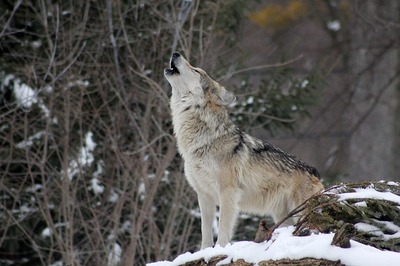Wisconsin Wildlife Officials Release Revised Draft Wolf Management Plan
Thursday, August 3rd, 2023 -- 8:00 AM

(AP) Wisconsin wildlife officials released a revised draft wolf management plan Tuesday that recommends holding the statewide population at around 1,000 animals, a concession to conservatives looking for a hard limit.
The Department of Natural Resources adopted a wolf management plan in 1999 that calls for capping the statewide population at 350 wolves. The population has roughly tripled since then, leading to occasional wolf attacks on pets, hunting dogs and livestock.
Hunters and farmers have pointed to the 350-animal limit as justification for generous kill quotas, angering animal rights advocates. The department released a draft of a new wolf management plan in November.
The proposal didn’t include a hard population goal, instead recommending that advisory committees monitor local wolf populations and decide whether to reduce them, maintain them or allow them to grow. The draft wasn’t well received by hunters, farmers and GOP legislators.
State Rep. Chanz Green and state Sen. Rob Stafsholt introduced a bill in March that would require the DNR to set a statewide population goal in its new plan. The measure has yet to get a hearing.
The plan the DNR unveiled Tuesday still doesn’t set a hard population goal. But it does include a chart laying out recommendations on when to reduce the statewide population, when it would be considered stable and when to let it grow.
If the number of wolves falls below 799, wildlife officials should look to grow the statewide population, according to the plan. If the population stands at 800 to 999 wolves, the population could grow or be considered stable.
If the population stands at between 1,000 and 1,199 wolves, the population would be considered stable or could be reduced. If the number of animals grows to 1,200 or more, the population should be reduced.
The new draft retains provisions from the original that call for reducing the window for registering wolf kills from 24 hours to eight hours and issuing hunting licenses for specific wolf management zones.
Right now wolf licenses are valid in any of the state’s six zones. The DNR’s policy board is expected to vote in October on whether to adopt the management plan.
Feel free to contact us with questions and/or comments.




